In my job as a boat dealer I do get, of course, a pretty intimate insight into the business, the workings of the yards and of course all the “secrets” or, better said, all the “behind the scenes”-action which you´d normally not print in a high-glossy brochure. But, I guess, that´s the same divergence of the marketing world and the real world as you have with cars (empty streets in all those advertisements) or in housing (always pretty nice neighbors). Last week during a handover procedure in Les Sables d´Olonne, I´ve experienced such a chapter and I´d like to tell that story.
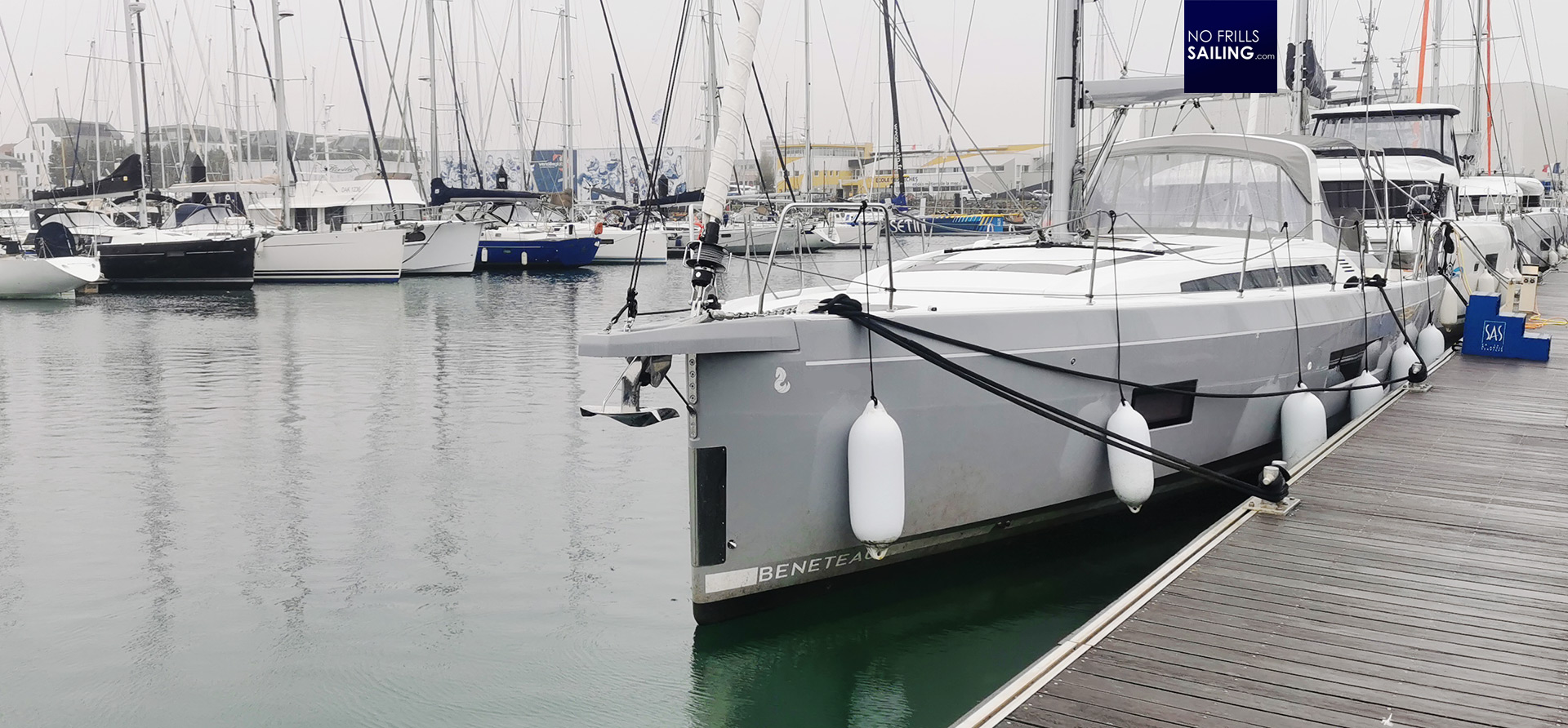
It is not meant to spread discomfort about the products we sell and deliver but to show that with a 100 % handmade product you will always get, well, a handmade quality. This includes all the pros and of course all the downsides of having people making things, not robots. We meet aboard this wonderfully equipped and already commissioned Oceanis 51.1, receiving a text beforehand that there was water in the boat, source unknown. Okay, a leak – that´s a new one …
Minimizing the possibilities
First thing you do is to minimizing the possibilities of the source, meaning to encircle the reasons why there is water in the first place. We start by getting a “taste” for the water that’s entering the boat: If it is salty, red alert! Salt water means that there is a whole somewhere where water from outside – the ocean – can enter the boat. This is an absolute no-go and should trigger highest alarms. If it is fresh water, possibly not oily, than it´s annoying too but no imminent danger.
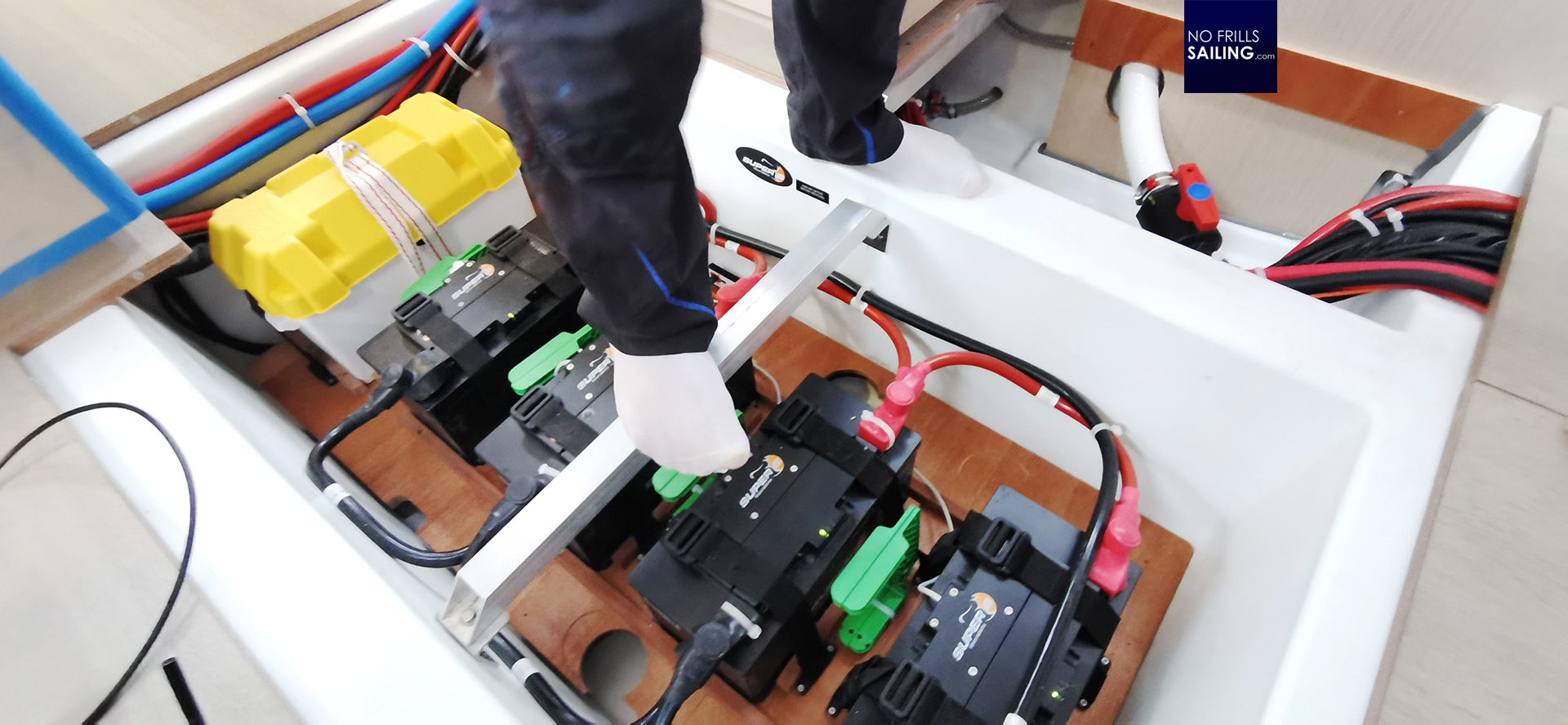
Our partners in Les Sables had already commenced a search for the possible leak. A hint brought them on the right track: Our owners who were living aboard for a week now, said, that especially at night the fresh water pump engaged multiple times. Well, Sherlock, that´s an easy one: If pressure in the fresh water systems goes down, the pump automatically activates and raises pressure. There are only to ways for the pressure to go down: Somebody opens a tap or … well, there´s a leak. Since the Oceanis 51.1 is a huge boat with quite a number of pumps, we´ve had to check for the one pump regularly engaging. Now we knew where to look closer.
Zeroeing in on a possible location
It turned out that the electric WC-pump of the starboard side bathroom was the source. So we checked all hoses for a visible leak, which we didn´t found. After some days of a quite desperate search and constant pumping out of a load sh**t of water (up to 30 liters at some point) we finally found the source: A hose-clamp at – of course! – the most inaccessible location, wasn’t tight enough so that the fresh water was sipping out. Problem solved! Well, not really …
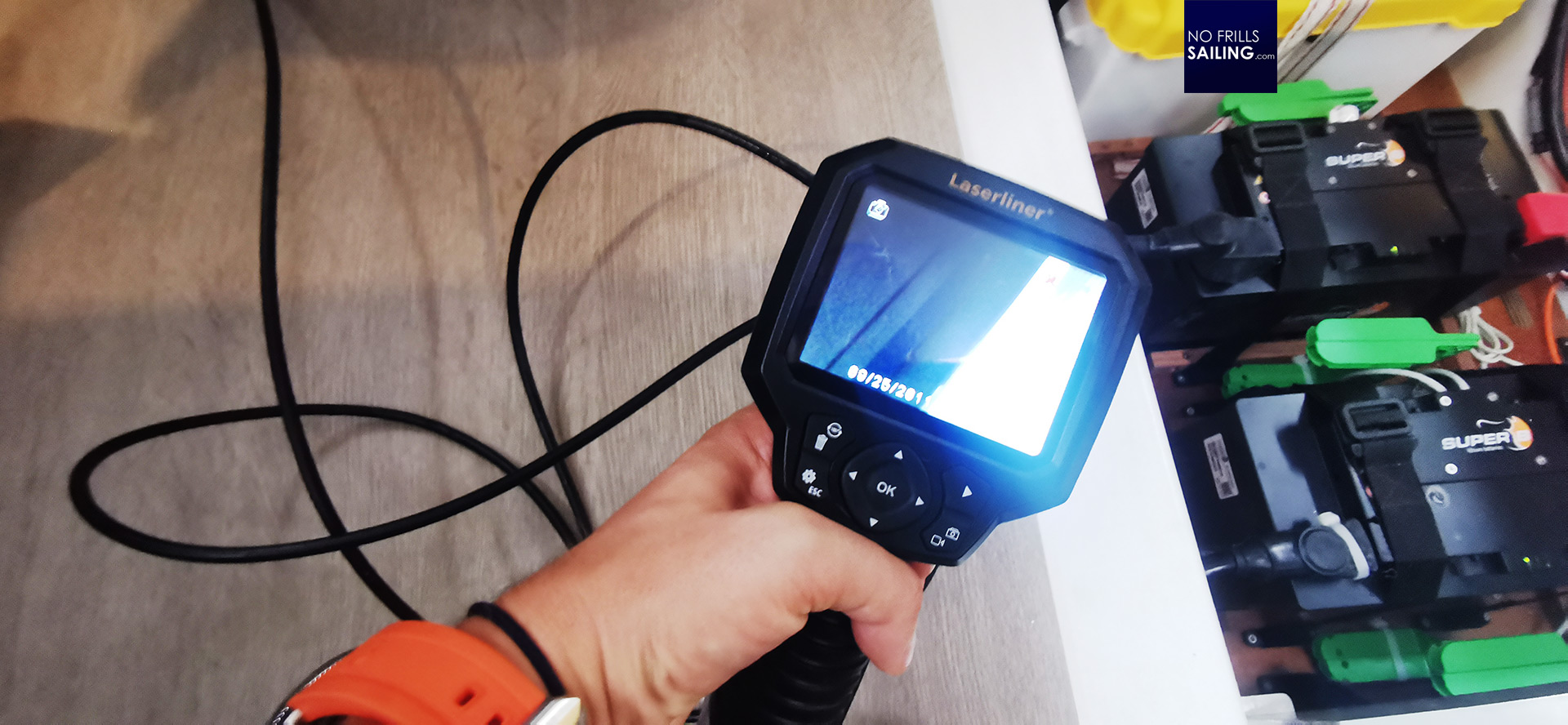
There was another problem apparently: From the bathroom bilge the water creeped – as it should – through holes and canals downship to the lowermost location of the hull. The bilge. But, not this time: It accumulated inside the battery compartment right in front of the bilge. From here, the water dd not enter into the bilge. But it rose higher and higher, thus threatening the Lithium-batteries and electronics. As a pro company, we´ve had the right equipment to check underneath the compartment and look for the culprit of this malaise.
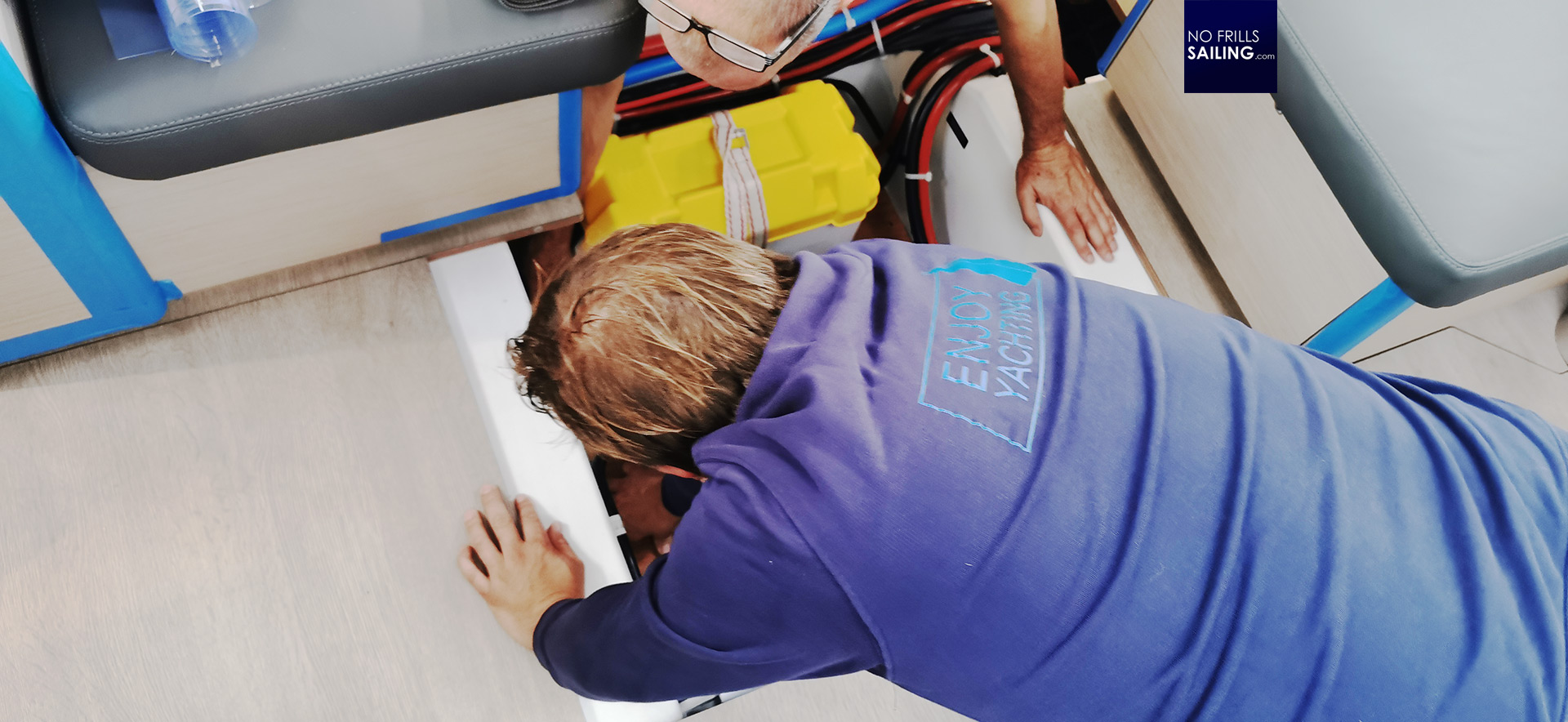
My colleague went for our car and returned with an endoscope. This is a glasfiber-connected mini-camera that is mounted at the end of an almost 5 meters long tail. The camera has some LED-lights so that it can illuminate the surroundings. The other end is the handheld display. A small display shows what the camera shoots. The whole system is very rigid so that one can use it in rugged situations.
Working with a Fiberscope/Endoscope
My colleague bent down and we began to search for the reason why the water wasn´t entering the main bilge. If not found, the water that had already entered the hull and was now sloshing inside between inner and outer shell would never find its way to the bilge and could therefore cause trouble, never drying out completely. Secondly, water must always be fee to flow into the bilge.
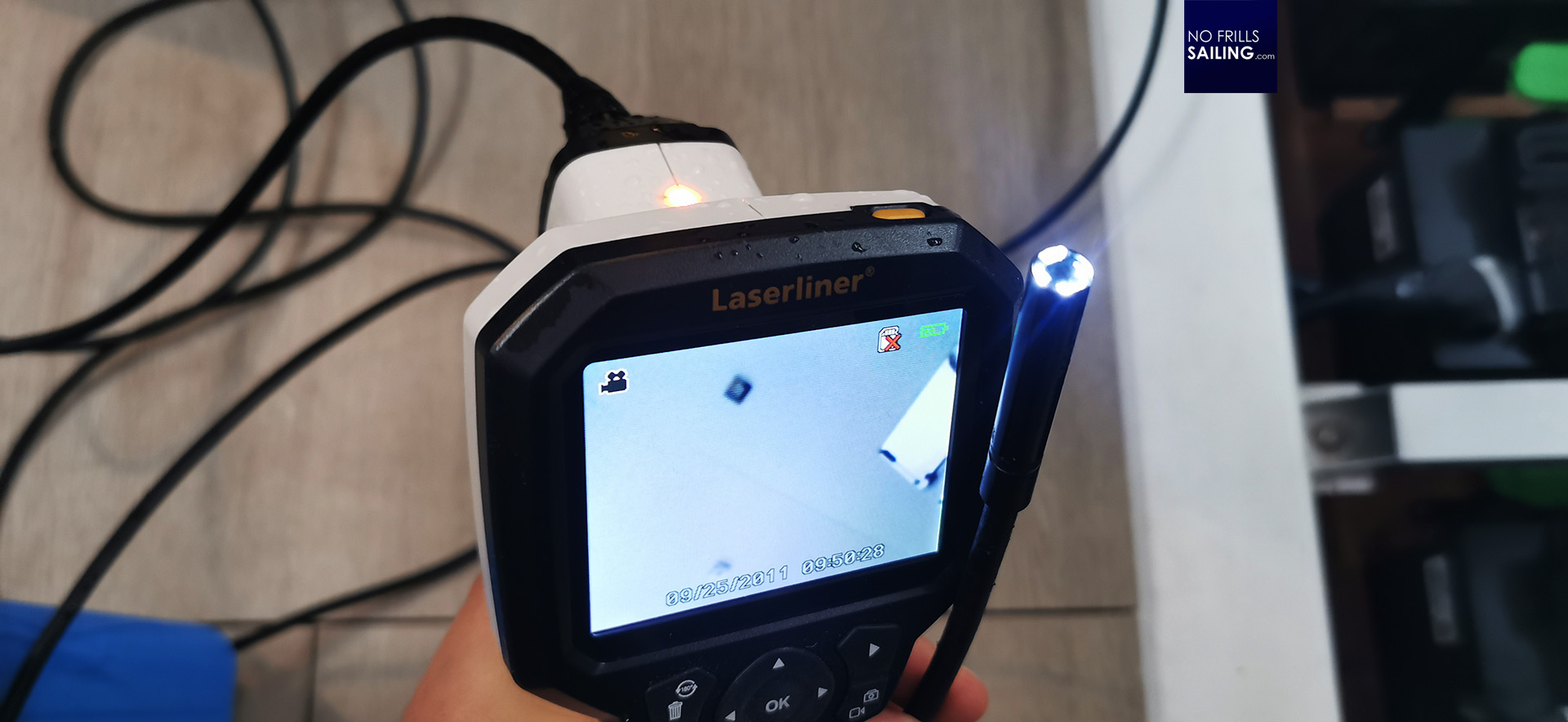
We checked. I tried to give an interpretation of what the camera was showing, my colleague tried to identify the canals and holes through which the water was flowing – and which weren´t working at all. It took us roughly half an hour working our way aft through the saloon when we finally were able to identify the culprit.
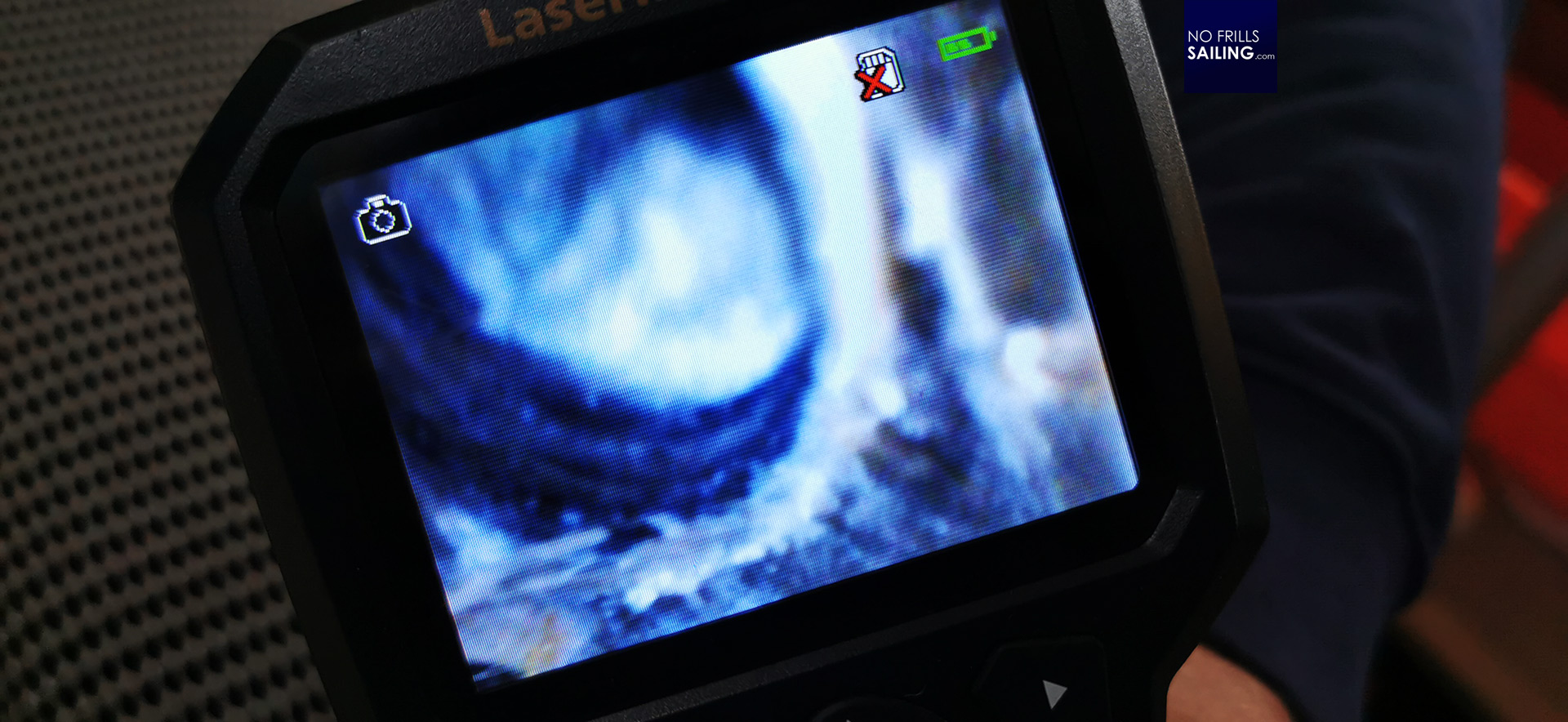
As it turned out, apparently, one of the boreholes connecting the battery-compartment with the bilge-compartment had either not really been drilled all the way through or (which is my personal guess) had been re-filled by the loose GRP-filament turned open by the drill. This, mixed with slush-turned GRP-dust could indeed clog the approximately 1 centimeter hole. My colleague guessed it may also be a screw or bolt which fell into the boat during building process. Whatever it may be – it clogged the canal.
Problem found – problem solved!
Now that we had eliminated further flow of water into the boat and also found the possible reason why and – more over – where the water couldn´t enter the bilge, we could plan how to get it straight again. Unfortunately it is really late in the sailing season and already autumn makes the Bay of Biscay a pretty uncomfy place. With a pro skipper crew arriving the coming week the owners signaled that they wanted to cast off the sooner the better.
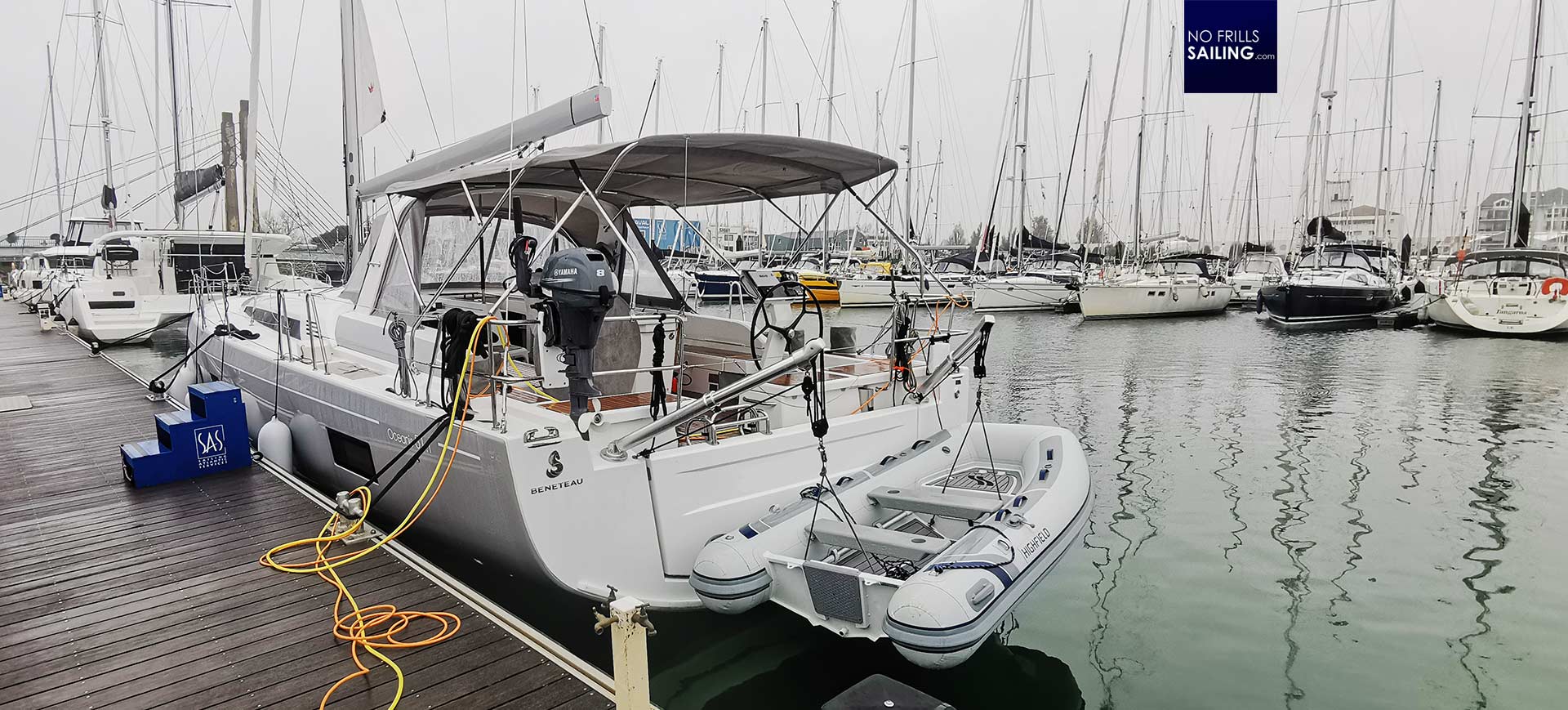
So we decided to have them complete their delivery journey to the Mediterranean first. Get out of the Atlantic Ocean, round the Cape Finisterre and the Iberic Peninsula to get into the Med, possibly Turkey, where we could re-unite. There we will disassemble the whole battery compartment, take out the batteries and the battery-mount to get down to the bare GRP-hull. From here we re-open the canals either by high pressure air or by mechanical means, speak, by drilling.
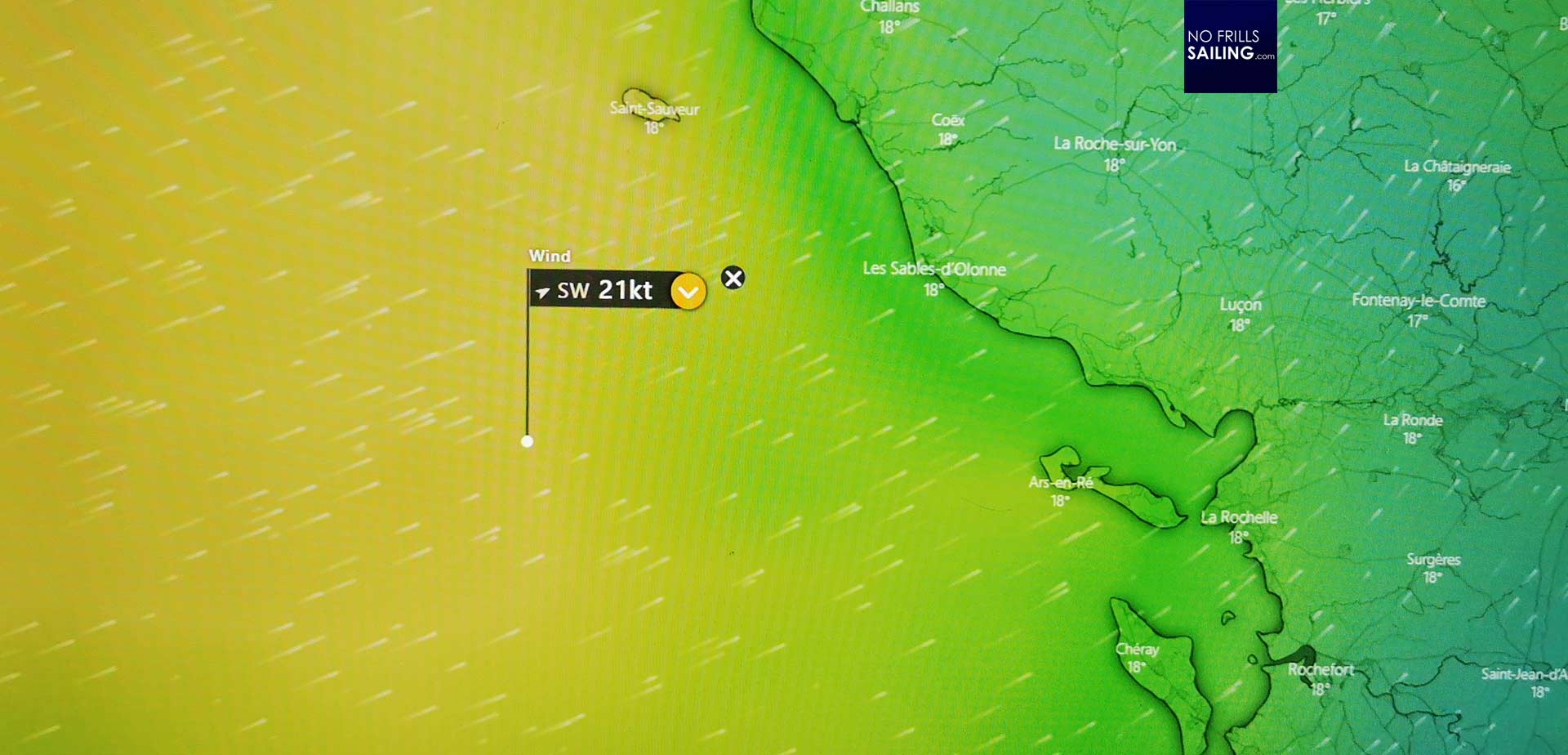
Last thing we had to do was the shakedown cruise, which turned out to be fun as well. Wind was up to 21 knots in the forecast, not too much, I thought when I awoke that day and checked in my app. Well, not quite: With 20 knots flat at the pontoon already, quite gusty frequently, and a big-ass swell rolling in from mighty Atlantic Ocean, that day promised to be challenging. We casted off and – of course! – as soon as we had all lines taken in, the owner discovered a flaw in the electronic throttle: Either 800 rpm idle or flank speed. Wind already starting to play with our boat, we had to work very hard, clever, sound and focused to bring back the boat safely to the pontoon.
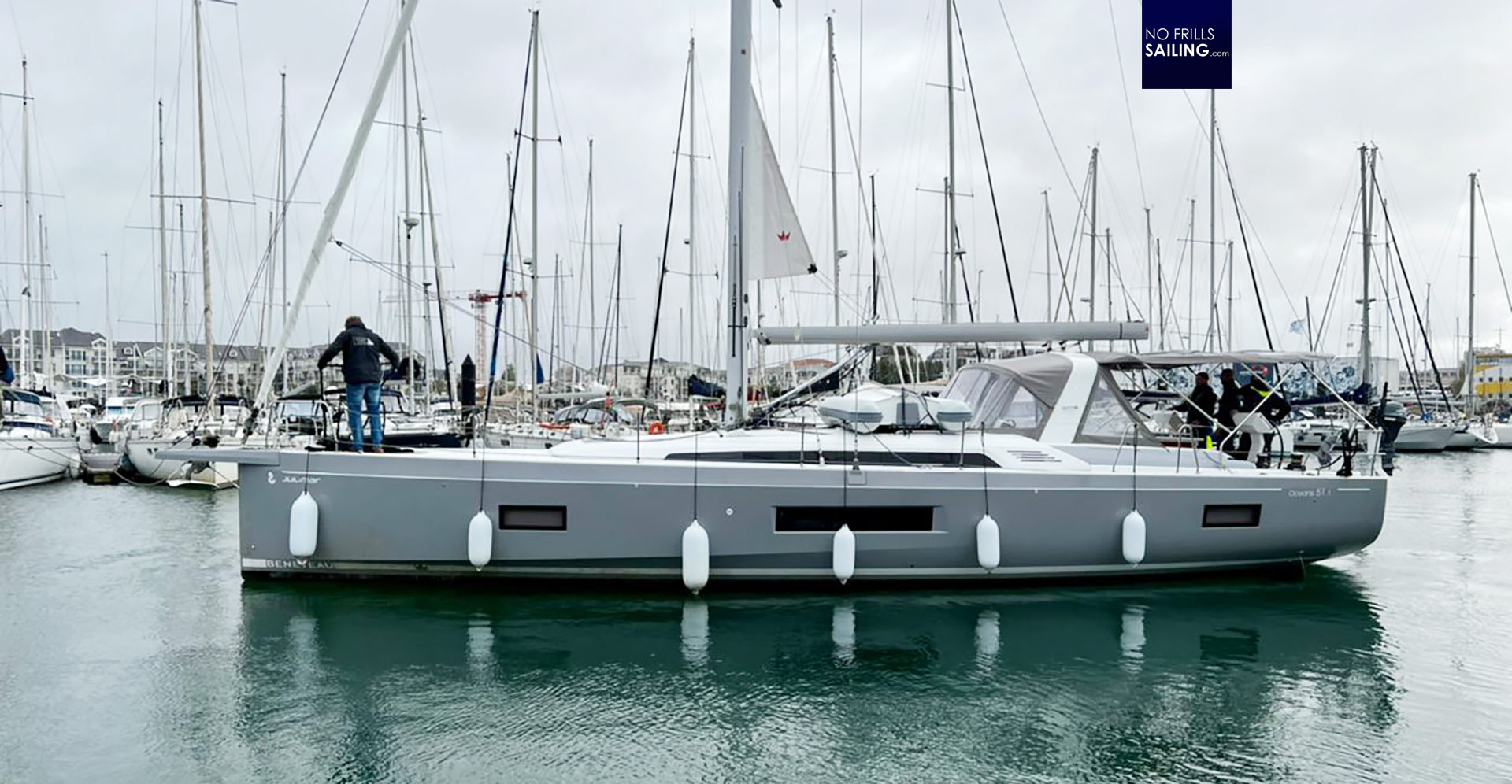
In the end it turned out that the reason for the crazy engine controls was an mis-adjustment at the actuator down below, a 15-minute repair done by my colleague. But again, we learned that it is always the small thing that causes such a big chain of shit happening afterwards. What we have learned that day? Well, if humans are involved, mistakes happen. So, four-eyes-principle: Double check all clamps, connections, functions. Commissioning of a sailboat is much, much more than just unpacking, stepping a mast and putting in the right language into the plotter. Happy to having found all these things at the pontoon, we wished our clients all the best – and will re-unite with them in a few weeks time.
You might as well be interested in these related articles:
Spotting a leak, part 1: Cat under water!
Clearing a filthy, dirty old bilge
Handover of a yacht gone wrong
